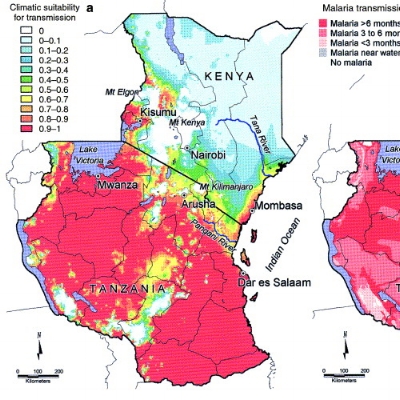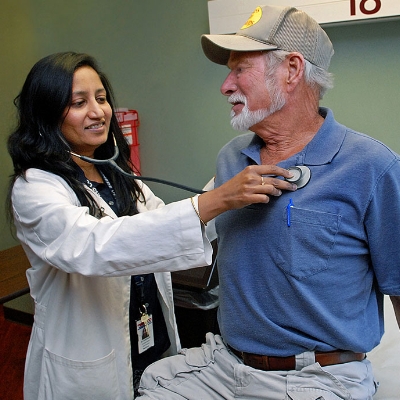Research
WORKING PAPERS
Spatial Correlation between Health Site Prevalence and Incidence of Malaria
The below abstract is for an ongoing project that has grown out of course work in comparative health, GIS, and policy. I also presented this working paper on a panel at the November 2017 NAGPS Graduate Research Methods Forum.
Background: In Tanzania malaria causes more mortality and morbidity than any other disease, accounting for 40% of the country’s annual national health expenditures, nearly half of its outpatient hospital attendance, and 32% of deaths in the entire population. Conventional techniques to combat malaria have accomplished notable improvement over the past several decades, yet for eradication, novel approaches and new perspectives are needed. Geographic Information Systems (GIS) and spatial analyses can provide that. Most malaria studies are based on environmental factors; few on the role of infrastructure design and the correlation with malarial health outcomes. My research looks at the dispersion of health sites (hospitals, clinics and dispensaries) relating to present day incidence of p.falciparum, the most common and dangerous strain of malaria for humans. Objective: When controlling for major environmental aspects, determine if a spatial correlation exists between the dispersion of established health sites and levels of malaria incidence in mainland Tanzania. Methods: Six risk factors were assessed: rainfall, altitude, distance to water, distance to roads, Insecticide Treated Bed Nets (ITNS) usage, and health site distribution. Each risk factor was spatially classified in GIS and assigned a level of low, medium and high risk in accordance with literature. Factors were then weighted and the final malaria prediction used a model combining the six risk factors and their derived weights through an index overlay in GIS. Results & Conclusions: Clear terrestrial “hotspots” of high malaria incidence are revealed within southern Kigoma and western Shinyanga regions, correlating with notable low and absent numbers of health sites of any type. The potential implications of such a relationship warrants further research, funding allocation, and policy consideration not only now for diagnostic and treatment efforts (secondary and tertiary care), but also for future preventative (primary) measures especially considering recent advancements in developing efficacious vaccines. Keywords: malaria, GIS, spatial techniques, Tanzania, health sites
Marginalized consumers: exploring disability, body image, and clothing consumption
The below abstract is for a working paper build out of my thesis research on disability and apparel. I also presented this working paper and my thesis research at NAGPS Graduate Research Methods Forum.
Background: Research has shown that essentially, image matters. Apparel is one aspect part of body image, and for people with disabilities (PWDs), clothing intimately impacts their self-esteem, physical health, and afforded opportunities, and participation in society. However the status quo of the fashion industry fails to offer access to comfortable, functional, and stylish clothing that meets the basic practical and symbolic needs. Resulting in millions of individuals meeting challenges to be adequately clothed. Objective: Qualitative interviews were conducted to describe the lived experiences of how individuals with disabilities engage with clothing. Though research exists on the topic of adaptive attire in fields such as occupational therapy and ergonomic design I wanted to capture the rich data qualitative research affords and construct a better understanding of the dynamic ways in which clothing interacts with function, health, and well-being. Methods: Twenty individuals participated in interviews, which audio recorded and transcribed. A scheme was devised (informed in part by the International Classification of Functioning, Disability and Health (ICF)) and utilized for inductive and deductive analysis facilitated through NVivo software. IRB approval was granted and an audit trail was maintained throughout. Results: Fifteen identified as female, six were wheelchair users, three were individuals with at least one major amputation, three had spinal curvatures greater than 30 degrees and one had medical diagnoses outside of these broad categories. Three major themes emerged, including three main sub-themes: 1) Participants express a desire for inclusive design to be integrated with current clothing brands and venues; 2) In addition to frustrations that directly relate to unique characteristics related to their disability, participants also describe clothing frustrations that are similar to “able-bodied” individuals; 3) Clothing plays intimate role with all three aspects of the ICF model: a) body structural & function, b) activity & participation, and c) contextual factors, including environmental and personal. Conclusion: With a growing aging population and the reality that millions fall outside the body “norms” that dictate apparel markets and the design of garments, the need for appropriate and attractive adaptive attire becomes ever more salient. Keywords: adaptive attire, inclusive design, universal design, garment construction, apparel, disability, disability studies, amputee, wheelchair user, scoliosis, paraplegia
Among US adults, veteran status of any branch affiliation is associated with increased incidence of any/all cancers
The below abstract is for a working paper that arose out of a year-long biostatistics course. Motivated by the illness and death of my father having been a marine, developing early-onset atypical cancer, and having been stationed at Camp Lejeune during it's years of carcinogenic contamination, knowing the hundreds of similar adult cases without research or data support, and having heard of cancer specific risks associated with military deployment I was curious to see if there was a correlation with all branches and all cancers. I also presented this research and working paper as a poster at the November 2017 NAGPS Graduate Research Methods Forum.
Background: Participating in the United States military may increase the risk of developing cancer. A cancer diagnosis has been shown to be associated with long-term effects on physical, mental, and psychosocial well-being. Prior research on the link between military service and cancer have focused on specific exposures, branches, or assignments (e.g. Operation Ranch Hand responsible for spraying Agent orange over Southeast Asia from 1962-1971, and pilots during the Gulf War Veterans with significant exposure to aviation fuels and higher risk for testicular cancer). Limited research exists on the overall association between service and cancer considering all branches of military and any/all solid-organ and skin cancers. Methods: The Behavioral Risk Factor Surveillance Survey (BRFSS) is a cross sectional telephone survey of non-institutionalized adults (≥ 18 years old) living in households in the US. It uses complex survey design involving stratification and multistage sampling to yield nationally representative estimates. Using data from 2013 (n=491,773) a cross-sectional analysis was used to determine the association between veteran status (members of any branch of the US armed forces) and a history of any/all cancers. Observations with missing data on exposure or outcome were excluded (n=2,917, <1%). Chi square tests were used to test for differences between veterans and non-veterans with respect to demographic characteristics. Odds ratios (OR) and 95% confidence intervals (CI) were used to describe associations between veteran status and cancer diagnosis, adjusting for potential confounders. Results: The final sample consisted of 488,856 participants. Among those, 12.53% were veterans (n=61,505) and 11% had a diagnosis of any/all cancers (n=82,275). Unadjusted rates of cancer diagnosis were higher among veterans (20%) compared to non-veterans/civilians (10%, P < 0.001). In a multivariable logistic regression model controlling for age, sex, ethnicity, smoking status, and access to a primary care doctor, veteran status was associated with 45% increased odds of cancer diagnosis (OR 1.45, 95% CI 1.38, 1.52). Conclusion: Prospective, as well as retrospective, studies are necessary to determine direction of this association between veteran status and cancer. Furthermore, general physicians and internists encountering veteran patients, particularly within the Veteran Affairs (VA) system may consider particular attention to cancer screening for this population. Keywords: cancer, veteran, non-civilian, malignancy, va, armed forces, skin cancer, solid-organ cancer
Medical screening Protocols & Practices Need Revising for Asylum Seeking populations in Germany
The below executive summary and linked policy memo is the work of a semester-long final project for a comparative policy course taken Fall 2017. Constrained by two main parameters (migration policy in Cambodia, Brazil or Germany) and given my MPH background, exposure and experience with vulnerable populations, and familiarity with the Arabic culture and language- I was inspired to explore the critical issue pertaining to the displacement of millions of Syrians refugees in Germany and their access to health care. For the sake of this policy memo I narrowed my scope to the imperfect and costly protocols of inconsistent and often excessive infectious disease (ID) screening during compulsory medical evaluations. Though I did not have space to elaborate on this in my policy memo, the implications for my proposed policy solutions extend beyond decreasing unnecessary excessive spending and improving asylum seeker ethical exposure to diagnostic tests unfounded by evidence based medicine; the big picture of health care and wellbeing for refugees could be drastically improved if the costs saved from outlined recommendations could be directed toward mental health services, agreeable the largest concern and biggest unmet need in this population. I hope to build off this initial research and work to publish consolidated and up-to-date protocols on ID screening and hope to participate in Brown's International Advanced Research Institute (BIARI) June 2018.
Executive Summary:
Germany, home to over 1.5 million asylum seekers, spent 10.3 million euros (EUR) on compulsory medical screenings of new asylum applicants in 2015. The motivation and importance behind these clinical evaluations and infectious disease (ID) screenings is for both the sake of protecting patients/asylum seekers and the public at large. However, discrepancies in medical evaluation protocols across the 16 autonomous federal “states” / länder (given discretion in pathogen-specific screening) has resulted in excess spending without supportive cost benefit analyses. An economic evaluation of cost differences between states for fiscal year 2015 revealed exorbitant expenses, particularly in states employing comprehensive / “extended” screenings, and researchers are calling for an evidence-based approach. The weniger ist mehr “Less is More” policy recommendations make use of documented and contemporary “best practices” in the field of refugee medical screenings (and specifically tuberculosis testing recommendations), and would result in a minimum of 3.1 million euros saved related to improved guidelines for ID screening, with little to no increase in public health risk.






